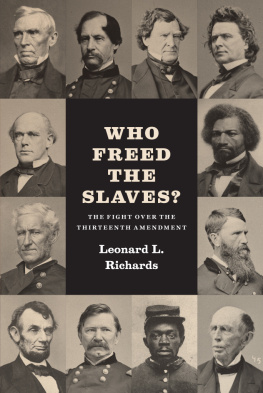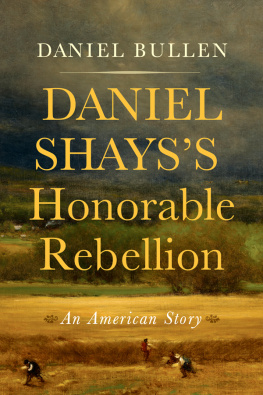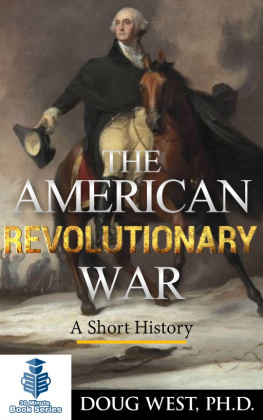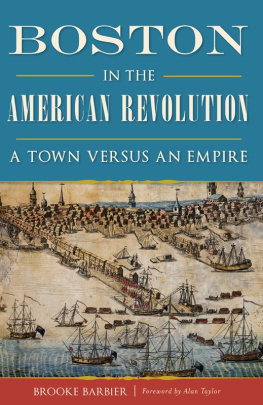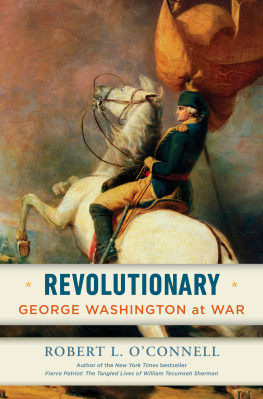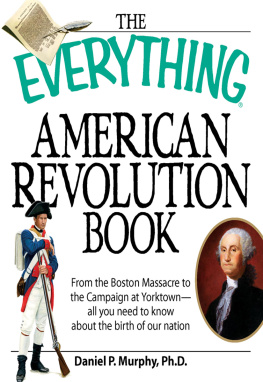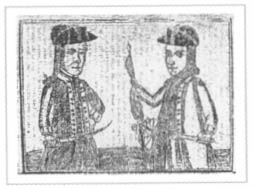
SHAYSS REBELLION
Shayss Rebellion
TheAMERICAN REVOLUTIONS FINAL BATTLE
LEONARD L. RICHARDS

Copyright 2002 Leonard L. Richards
All rights reserved
10 9 8 7 6 5 4 3 2
First paperback edition 2003
Published by
University of Pennsylvania Press
Text design by Kristina Kachele
Library of Congress Cataloging-in-Publication Data
Richards, Leonard L.
Shayss Rebellion : the American Revolutions final battle / Leonard L. Richards.
p. cm.
Includes bibliographical references and index.
ISBN 0-8122-3669-6 (cloth : alk. paper). ISBN 0-8122-1870-1 (pbk. : alk. paper)
1. Shayss Rebellion, 1786-1787. I. Title.
F69 .R63 2002
For Hazel
CONTENTS
PREFACE
THIS BOOK STARTED BY ACCIDENT. FOR TWENTY-FIVE years I rarely gave a thought to Daniel Shays and his followers, even though I lived in the heart of Shayss country and drove down Shays Street every day to work. Like most historians, I thought that as a scholarly topic Shayss Rebellion had been worked to death. I had heard the standard story many timesfirst as a high school student, then as an undergraduate, then as a graduate. It appeared in every American history textbook as well as scores of scholarly books. I had read it at least two dozen times.
Then, about five years ago, I ran into a classroom problem. Just before the fall classes were to begin, the bookstore phoned with the news that the first book that I had assigned to a class of forty-five students was no longer available. Could I come up with a last-minute replacement? I said yes and hurriedly began thumbing through one book after another. In the process, I discovered in a footnote that the Massachusetts Archives had the names of the Shaysites, not just the names of the leaders, but some four thousand names.
That is unusual. With most rebellions, finding out who participated is an impossible task. With Shayss Rebellion, however, the rank and file had the opportunity to avoid harsh punishment by accepting a temporary loss of citizenship and swearing future allegiance to the state and its rulers. Thousands did so. Scores of others were arrested and stood trial.
Why, then, had scholars not studied these men in depth? That puzzled me. Was it worth driving eighty miles to Boston to find out? I procrastinated for months. Then, again by accident, I learned that the university library had the pertinent state archives on microfilm. On taking a peek, I understood immediately what the problem was. The handwriting was awful. Working through it was certain to be arduous, even for someone who had spent years deciphering student blue books.
It was indeed arduous. Once it was done, however, the next step was far more pleasant. I decided to learn something about the men on the list. Here I had the help of town archivists and town historians who always went the extra mile to provide me with the data I needed. Many of these men and women I have thanked in the notes, but of the many who came to my aid I am especially in debt to Bernie Lally of West Springfield. Without his help, I would know next to nothing about his hometown.
From learning about the men on the list, it became obvious that the standard story of Shayss Rebellion did not wash. The notion that the Shaysites were poor farmers hopelessly in debt, a notion that appears in scores of scholarly books as well as every American history textbook, accounted for only a minority of the rebels. What of the majority? And what of men who did not rebel? Many of them were much worse off than the men who took up arms against the state. Why did they not rebel? The standard story made little sense. And with many rebels, it made no sense whatsoever. They did not even come close to fitting the stereotype. So I ended up doing more research and ultimately writing this book.
While writing the book, I received plenty of help from my colleagues at the University of Massachusetts, especially Bruce Laurie, who provided me with a whole stack of pertinent articles as well as much encouragement. I also owe a very large debt to many archivists and librarians, especially those at the University of Massachusetts, the American Antiquarian Society, the Massachusetts Historical Society, and the Massachusetts Archives. Along the way, I also taught three writing seminars on rural rebellions, and the students in those classes undoubtedly taught me more than I taught them. Some of that work I have cited in this book. I also gave a dozen or so lectures on Shayss Rebellion and benefited from the sound criticism I received from members of those audiences. Special thanks are also due to Christopher Clark, who made several suggestions for improving the manuscript, and to Robert Lockhart and Erica Ginsburg, who shepherded the manuscript through publication.
PROLOGUE
IN THE LATE WINTER OF 1786-87, GEORGE WASHINGTON had to make a decision. The events of the last six months had been maddening. Within weeks mobs ranging from two hundred to one thousand men had shut down the courts in five Massachusetts counties. In January, an army led by three officers of the Massachusetts Line had tried to seize the federal arsenal at Springfield, the storehouse of nearly all of New Englands military weapons.
For the retired general, sitting by the fire in his Mount Vernon study, sifting through reports, the news from New England was frightening. Just four years earlier, in 1783, he had said good-bye to war after almost nine years of service. The country had finally won the Revolution, and in a formal ceremony, with much fanfare and tears, he had returned his commission to Congress. Since then, he had been happily retired on the banks of the Potomac. He had never tired of the small details of farming. He loved agricultural experiments, breeding horses and hounds, and especially hoped to produce a superior line of mules. The rhythms of rural life had also rejuvenated him. He no longer felt like a weary traveler who had spent too many days carrying too many heavy burdens on his shoulders. Now, just a few days shy of his fifty-fifth birthday, he had become noticeably more cheerful and far more relaxed.
Yet, according to the reports on Washingtons desk, the nation he had done so much to create was falling apart. The newspapers had initially Yet, if the rebels were just poor debtors trying to stop the courts from foreclosing on their farms, why did they also try to seize the Springfield arsenal? Had they succeeded, they would have been better armed than the state of Massachusetts. Did they also intend to overthrow the Massachusetts government?
Especially troubling to Washington were the reports of his former aide, David Humphreys. Not only was Humphreys someone Washington liked and trusted, but Humphreys was also a New Englander, living in New Haven, just downriver from the troubles. Surely he knew what was going on. Was he to be ignored, then, when he attributed the uprising to the licentious spirit prevailing among the people? Or when he characterized the malcontents as levellers determined to annihilate all debts public & private?
More disturbing yet were the reports from Washingtons former artillery commander, General Henry Knox. The three-hundred-pound Knox knew Massachusetts welldid he not? He had been a Boston bookbinder and bookseller before the Revolution. He was now planning a four-story summer place on one of his Maine properties, land that once belonged to his wife Lucys family. He was a New Englander, through and through. Surely he must understand the strange people who lived around him. He was also Washingtons good friend as well as a former subordinate. Would Knox lead his mentor astray? What, then, was one to make of his claim that the real goal of the insurgents was to seize the property of the opulent and redistribute it to the poor and desperate? Had the levelling principle truly captured the hearts of the people?
Next page

